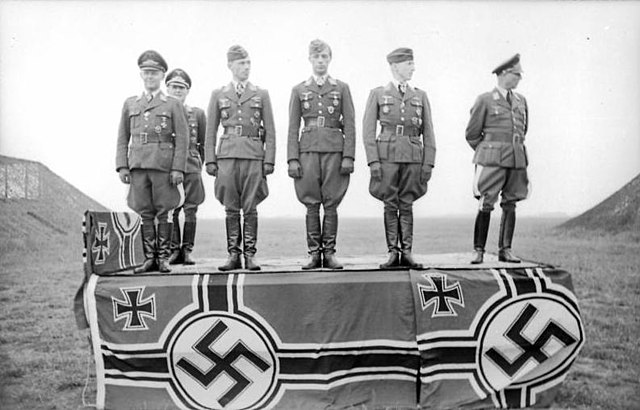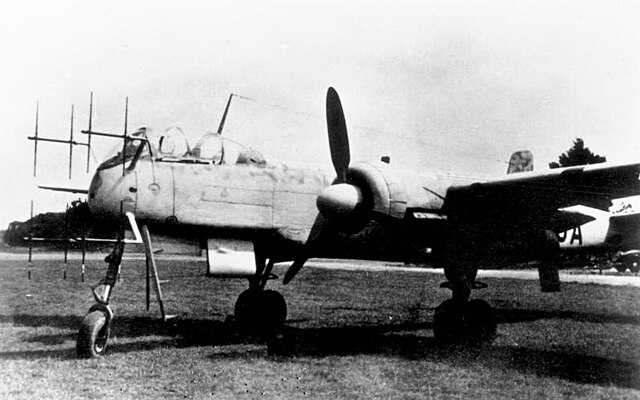Robert-Ludwig Becker was a German Luftwaffe military aviator during World War II, a night fighter ace credited with 44 aerial victories claimed in 165 combat missions, making him one of the more successful nocturnal fighter pilots in the Luftwaffe. All of his victories were claimed over the Western Front in Defense of the Reich missions against the Royal Air Force's (RAF) Bomber Command.
Ludwig Becker (pilot)
Lichtenstein cathode-ray tubes: • The left tube indicated other aircraft ahead as bumps. • The centre tube indicated range to a specific target and whether they were higher or lower. • The right tube indicated whether the target was to left or right.
From left to right, Kammhuber, Lent, Gildner, Becker.
Nachtjagdgeschwader 1 (NJG 1) was a German Luftwaffe night fighter-wing of World War II. NJG 1 was formed on 22 June 1940 and comprised four Gruppen (groups). NJG 1 was created as an air defence unit for the Defence of the Reich campaign; an aerial war waged by the Luftwaffe against the bombing of the German Reich by RAF Bomber Command and the United States Air Force. In 1941 airborne radar was introduced with radar operators, and standardised in 1942 and 1943. Consequently, a large number of German night fighter aces existed within NJG 1.
Bf 110 G night fighter with radar. The BF 110 was the mainstay of NJG 1
Do 217 J night fighter. A handful saw service with NJG 1
He 219 night fighter. Werner Baake flew these successfully exclusively in I./NJG 1
Members of the Royal Australian Air Force pose with Schnaufer's Bf 110 G-4 (G9+BA, Stab/NJG 1) at Schleswig, Germany, shortly after the end of the war (19 June 1945)







